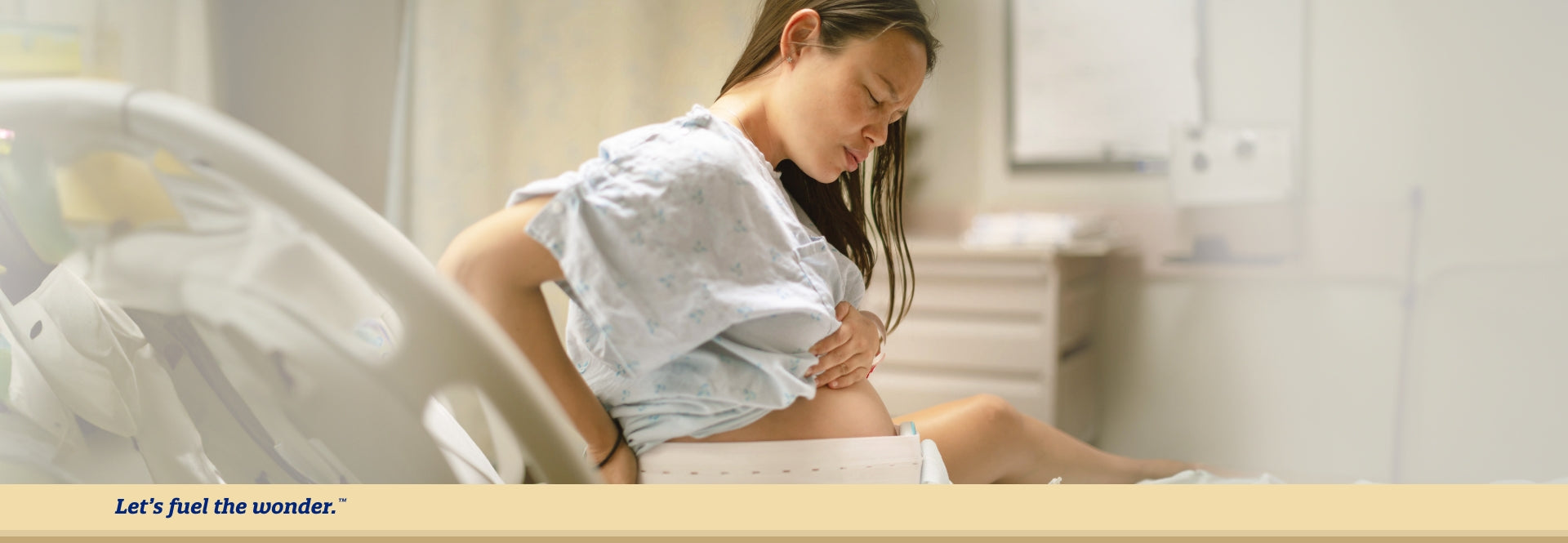Here is a breakdown of the different stages of labour so you know what to expect.
Stage One of Labour
You may want to start heading over to the hospital during stage one of labour. Before you leave, bring your hospital bag and give the hospital a call to let them know you’re coming. It is a good idea to have your hospital bag prepared a few weeks prior to your due date so you can leave the house quickly if needed. Once you arrive at the hospital, you’ll register or have a family member do it for you. A member of the staff will guide you to the labour and delivery area, where you’ll change into a gown and fill out several forms. Then, a nurse will check your pulse, blood pressure, urine, and cervical dilation. You can also notify your nurse about your birth plan so that the staff can have a better idea of your preferences.
The first stage of labour begins when you start having contractions. This is the longest of the three stages, but the length will vary for each person. Stage one typically lasts from the time your contractions start and ends when your cervix is fully dilated.1 Contractions help make the cervix more dilated and thinner so that the baby can pass through the cervix.2
The Latent Phase
The early phase of stage one is called the latent phase and can last up to 20 hours.1 Your contractions will be more irregular during this phase.2 It’s a good idea to time your contractions when they start so you know how far along you are. During the latent phase, contractions can occur every five to 20 minutes and last for around 30 to 60 seconds.1 Contractions during the latent phase may feel like a menstrual cramp, and for some people it may feel like a backache.1 The contractions in the early phase are generally not as severe as the active phase. Try to conserve your energy and empty your bladder as often as possible.1
Water Breaking
Your water will break during the first stage of labour.1 Once your water breaks, amniotic fluid will gush out of your cervix.1 If your water doesn’t break and things are moving slow, your doctor may make a small tear in the membrane to help speed up the process, this is called artificial rupture of fetal membranes.1
The Active Phase
The active phase of stage one begins once your cervix is dilated around six cm.1 Your contractions will become painful and more regular during this phase, occurring every two to three minutes.1 You can help deal with the pain by trying to walk in between contractions, finding distractions like music or television, taking a warm shower and trying different labour positions.1 It may also be helpful to have a labour partner, a close friend or family member present to help support you and keep you distracted.3 If this phase is too painful, you can use a pain reliever like an epidural to help you get through it.1
The Transitional Phase
The transitional phase begins when the cervix is dilated around eight to ten cm (fully dilated).1 At this point, you are almost ready to give birth! Continue practicing the same coping mechanisms as before to help manage the pain.1 Remember those breathing exercises you learned in childbirth class!
Stage Two of Labour
The second stage of labour is when the baby is pushed out of the birth canal.1 This happens when your cervix is fully dilated. Once there’s enough room for your baby to be passed through your cervix, you will be asked to push to help your baby through the birth canal.1 Giving birth can be as short as five minutes or as long as a few hours.1 Towards the end of stage two, the top of your baby’s head will begin to emerge.1 Once the head is pushed out, the rest of the body will follow easily. Your doctor or midwife will gently help guide your baby’s body through the birth canal.1 The umbilical cord is cut at the very end of the stage, and your baby will be quickly cleaned off. Congratulations, your baby is born!
Stage Three of Labour
After your baby is born, you will have to deliver the placenta. You may be asked to push a little bit to help it come out.1 But with everything going on, it’s possible that you may not even notice that this stage is happening. There are bigger things to focus on at the moment—after all, you’ve just brought a new person into this world!
Curious about your due date? Use our Pregnancy Due Date Calculator to get a better sense of when you’ll have to prepare for the big day. You can also check out the Prenatal Hub from Enfamil A+ CA to find more helpful pregnancy tips.





